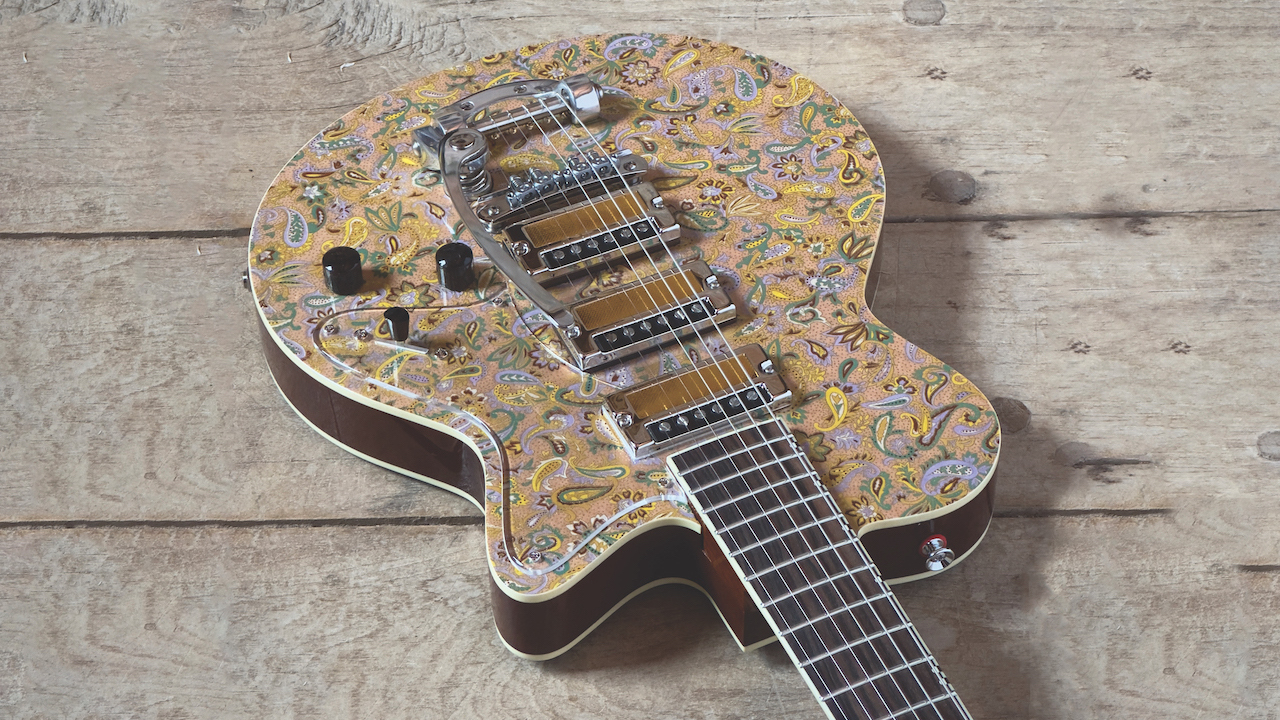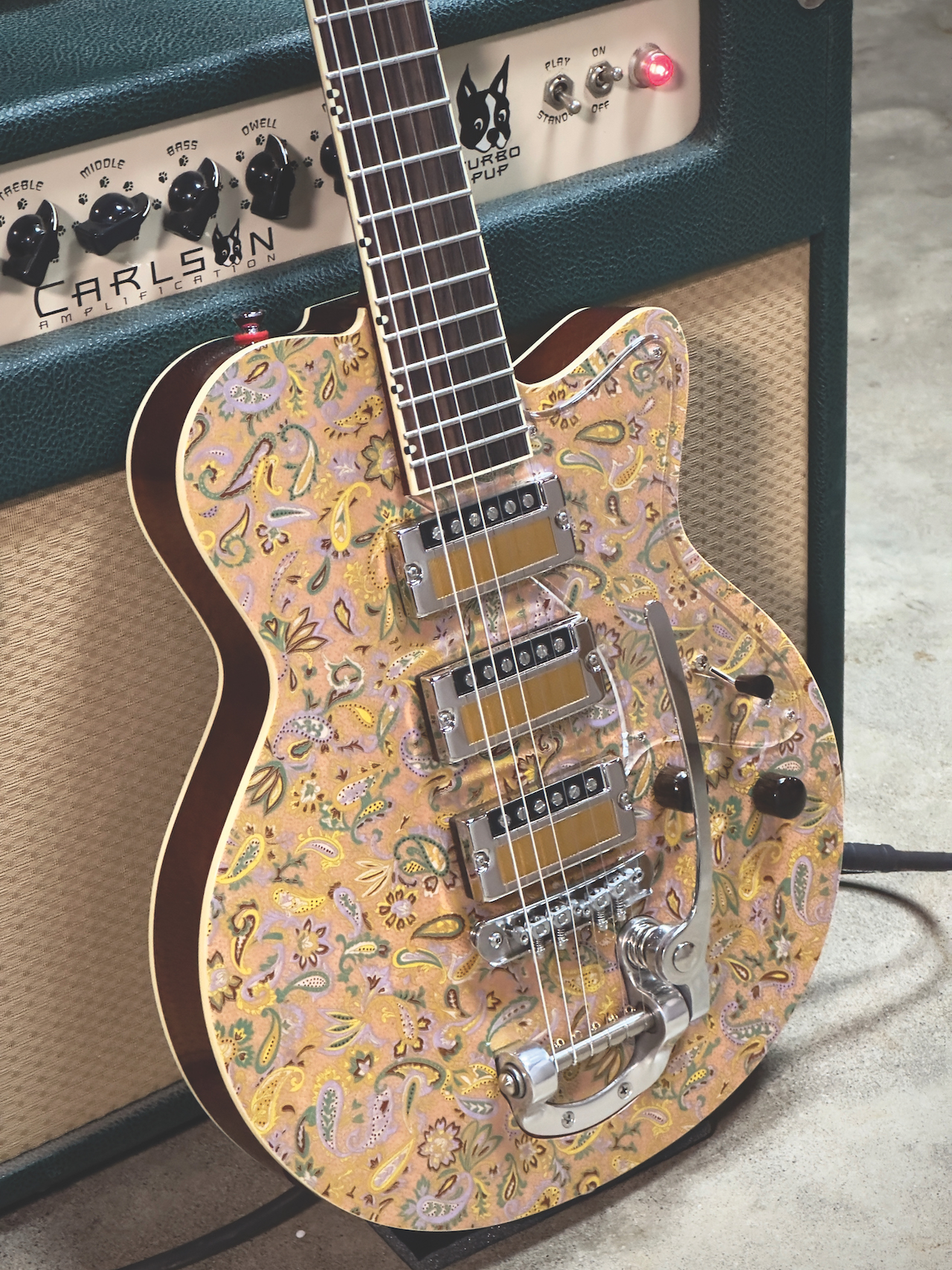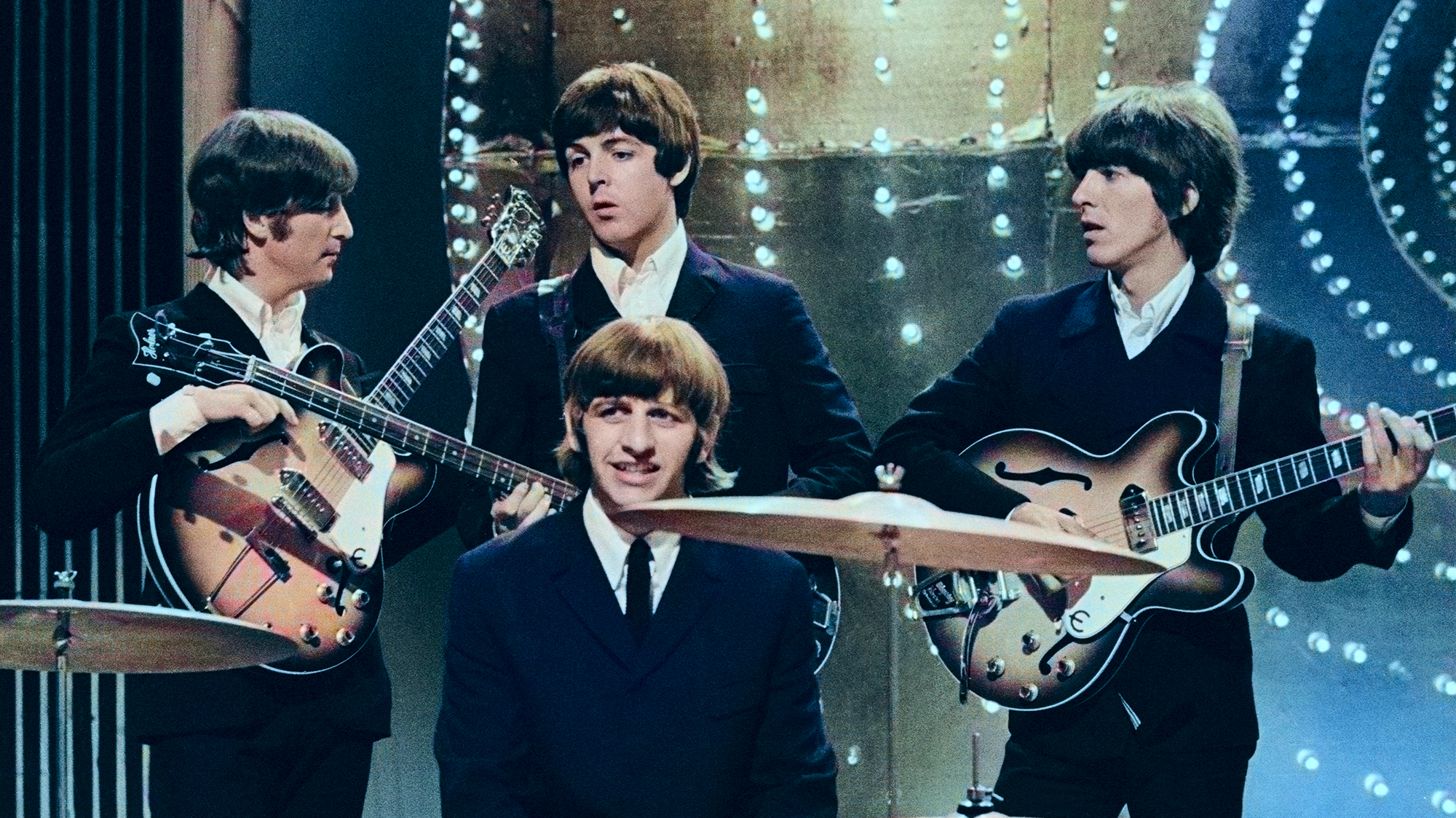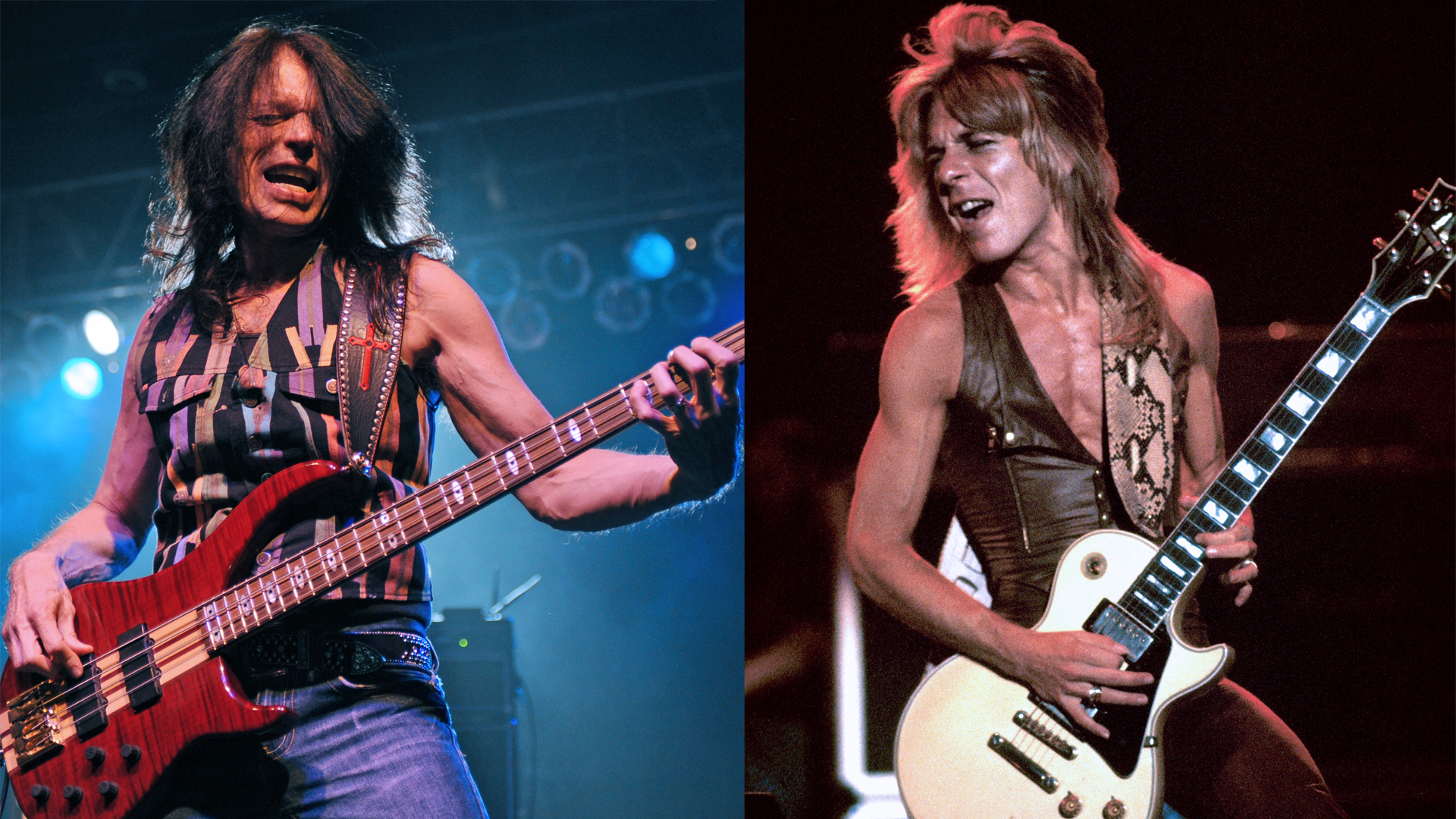“Breathtakingly beautiful and strikingly different from just about everything that has come before”: An homage to the original Paisley Tele, Joe Yanuziello's stunning, Japanese paper-adorned Gold Paisley Washi Paper Deluxe is a guitar like no other
With a precision-engineered, modded Bigsby, a trio of Curtis Novak’s Guyatone-style GT-V Tokyo Vintage pickups, and a fascinating blend of Telecaster, Les Paul, Guyatone, and Harmony aesthetics, this gorgeous build has incredible looks and equally incredible tone

Combine rare artistry with the three-pronged homage intended by Joe Yanuziello’s Gold Paisley Washi Paper Deluxe guitar and the result is something not only breathtakingly beautiful but also strikingly different from just about everything that has come before.
All guitar makers inevitably borrow from those who have preceded them. But many fans of high-end luthiery find that the strongest emotional and aesthetic connection is made by instruments that turn these inspirations into something that’s nevertheless startlingly original.
The Atomic Blue Electric One that this skilled Toronto-based maker sent me to check out nearly three years ago was an acknowledged twist on the Silvertone/Harmony Stratotone designs of the ’50s and ’60s, rendered as a refined instrument with a broad and original sonic palette. The eclecticism goes even deeper with Yanuziello’s new Gold Paisley Washi Paper Deluxe, which presents a striking figure with its mashup of Telecaster, Les Paul, Guyatone, and Harmony aesthetics.
Once in hand, however, this guitar sent my thoughts far from the pawnshop prizes that formed so much of its inspiration. It’s worth noting that Joe Yanuziello is an art college graduate who worked in custom cabinetry before segueing into guitar-making full-time in 1998.
Prior to venturing into electric guitars, the Canadian luthier earned a stellar reputation for his handmade acoustic flattops and archtops, resonators, Hawaiian guitars, and mandolins, and he spared not one iota of his finely honed chops when he started bolting pickups to his creations.

The Gold Paisley Washi Paper Deluxe deserves detailed examination, but the skin-deep beauty imbued by the striking top – Yanuziello’s take on the paisley wallpaper finish often seen on the Telecaster – will obviously catch most people’s attention first.
The design comes courtesy of the Japanese washi paper that gives this model its name. Available in a range of colors, and often with elaborate decorations, washi is made by adding fibers from the inner bark and wood of a range of alternative trees and shrubs. This results in a material that’s tougher than conventional wood-pulp paper, making it ideal for many traditional Japanese crafts.
Get The Pick Newsletter
All the latest guitar news, interviews, lessons, reviews, deals and more, direct to your inbox!
I realized that to apply the paper under pressure, without bubbles or folds, I would have to hollow out my guitar body after the paper was applied and dry
Joe Yanuziello
“A couple of years ago, I had the idea to find some paisley wallpaper and apply it to the top of one of my electric guitars, as an homage to the original Paisley Telecaster from the late ’60s,” Yanuziello tells me. “After searching, I couldn’t locate any wallpaper that appealed to me, and then I remembered the Japanese Paper Place in Toronto.
“As I combed through their handmade, hand-printed paper selection, I immediately thought this paper would make for an interesting guitar series. The paper is of a high quality, and the printing patterns and colors are beautiful.”
The effort was not without its challenges, however, and required a significant rejigging of Yanuziello’s approach to his hollowbody guitar builds.
“I realized that to apply the paper under pressure, without bubbles or folds, I would have to hollow out my guitar body after the paper was applied and dry. On these guitars, rather than gluing on the top, I hollow out the body and then glue the back to it. The other detail was to bind the top of the body before the paper was applied. This gave me a smooth, hard edge to trim the paper flush to the sides.
“I used a water-based clear glue made by Elmer’s so there would be no color interference through the paper from the glue color.”

Despite its compact appearance, the Gold Paisley Washi Paper Deluxe is built to a full 25 ½–inch scale length. The mahogany neck is attached to the body with three bolts in recessed cups and carved to an extremely comfortable medium-C profile that measures .84 inches deep at the first fret and .940 inches at the 12th. It’s topped with a fingerboard of Macassar ebony, with black side dots in the ivoroid binding that wrap around to creamy ivoroid dots at the fingerboard’s edge. It’s an elegant design that shows the fretboard in its best light.
The headstock facing and truss-rod cover are also of Macassar ebony, and the tuners are high-end open-gear Waverly units with ivoroid buttons. The polished-bone nut has a width of 1 11/16 inches, and there’s a volute behind the neck-to-headstock transition to strengthen that region. At the body end, Yanuziello has added another lovely touch with custom-made Macassar ebony control knobs and a barrel tip for the five-way switch.
Structural and cosmetic elements of the build aside, its three pickups and modified Bigsby vibrato are standout features. The former are a trio of Curtis Novak’s Guyatone-style GT-V Tokyo Vintage pickups, a variation on the popular gold-foil template.
Each employs a single coil wound around a bar magnet beneath the eponymous gold-foil portion of the cover; the visible “pole pieces” at the pickups’ front edges are merely decorative, just as in the originals of the ’60s. As the pickups are relatively shallow, they’re raised to the appropriate heights with shims of Macassar ebony.
To get the Bigsby working its best in this guitar, Yanuziello tells us, “I start with a B-3, one of the vibratos without the tension roller bar, and I saw off the end, keeping just the horseshoe-shaped casting that accommodates the rod that the strings attach to. I then pull out the six pins and drill through the rod so the strings go through and over.

“I grind off the nub that prevents the vibrato arm from rotating, and I reduce the width of the arm itself, in scale with the face of the instrument. And most importantly, I rout the horseshoe down into the body, allowing for the string break angle over the bridge. I also set the neck on a slightly steeper angle for the same reason.” To put it simply, this is not your grandfather’s Bigsby.
The Gold Paisley Washi Paper Deluxe plays effortlessly from the first to the 21st fret, and its overall lightness (around six pounds) adds to the ethereal experience.
Tested through a 65amps London head and 2x12 cab, a 1x12 tweed Deluxe-style combo, and a Fractal FM9 floor modeler, this guitar exuded charm, originality, and the kind of unique personality that makes you want to point it down the path less trodden. It has a cool, scooped, slightly funky voice at its core, with hints of semi-hollow/hollowbody electric tonalities and playing response.
Which is to say, the Gold Paisley Washi Paper Deluxe is really very much its own thing, combining contributions of the heavily chambered mahogany body and Novak’s translation of Guyatone’s take on the gold-foil, a low-output pickup that's also quite microphonic in a way that further enhances the openness and airiness of the guitar itself (and sometimes even sounds more like a microphone than a pickup).

The overall design lends a lot of character to clean tones, with excellent clarity as well as a certain texture and edge that give the sound depth and body. Show it some overdrive, though, and it’s bold and gutsy, presenting a garage-rock-y snark and attitude that belies the elegance of the overall build, but which certainly enhances the fun factor while urging you to make it your own.
As Yanuziello tells Guitar Player, “I think for a design to be successful in any discipline – furniture, architecture, artwork, auto design, musical instruments – the completed work should be greater than the sum of the parts.” His Gold Paisley Washi Paper Deluxe guitar is precisely that, and the result is inspiring.
CONTACT yanuziello.com
PRICE $8,500
Dave Hunter is a writer and consulting editor for Guitar Player magazine. His prolific output as author includes Fender 75 Years, The Guitar Amp Handbook, The British Amp Invasion, Ultimate Star Guitars, Guitar Effects Pedals, The Guitar Pickup Handbook, The Fender Telecaster and several other titles. Hunter is a former editor of The Guitar Magazine (UK), and a contributor to Vintage Guitar, Premier Guitar, The Connoisseur and other publications. A contributing essayist to the United States Library of Congress National Recording Preservation Board’s Permanent Archive, he lives in Kittery, ME, with his wife and their two children and fronts the bands A Different Engine and The Stereo Field.
"We tried every guitar for weeks, and nothing would fit. And then, one day, we pulled this out." Mike Campbell on his "Red Dog" Telecaster, the guitar behind Tom Petty & the Heartbreakers' "Refugee" and the focus of two new Fender tribute models
“A good example of how, as artists, you have to blindly move forward with crazy ideas”: The story of Joe Satriani’s showstopping Crystal Planet Ibanez JS prototype – which has just sold for $10,000










